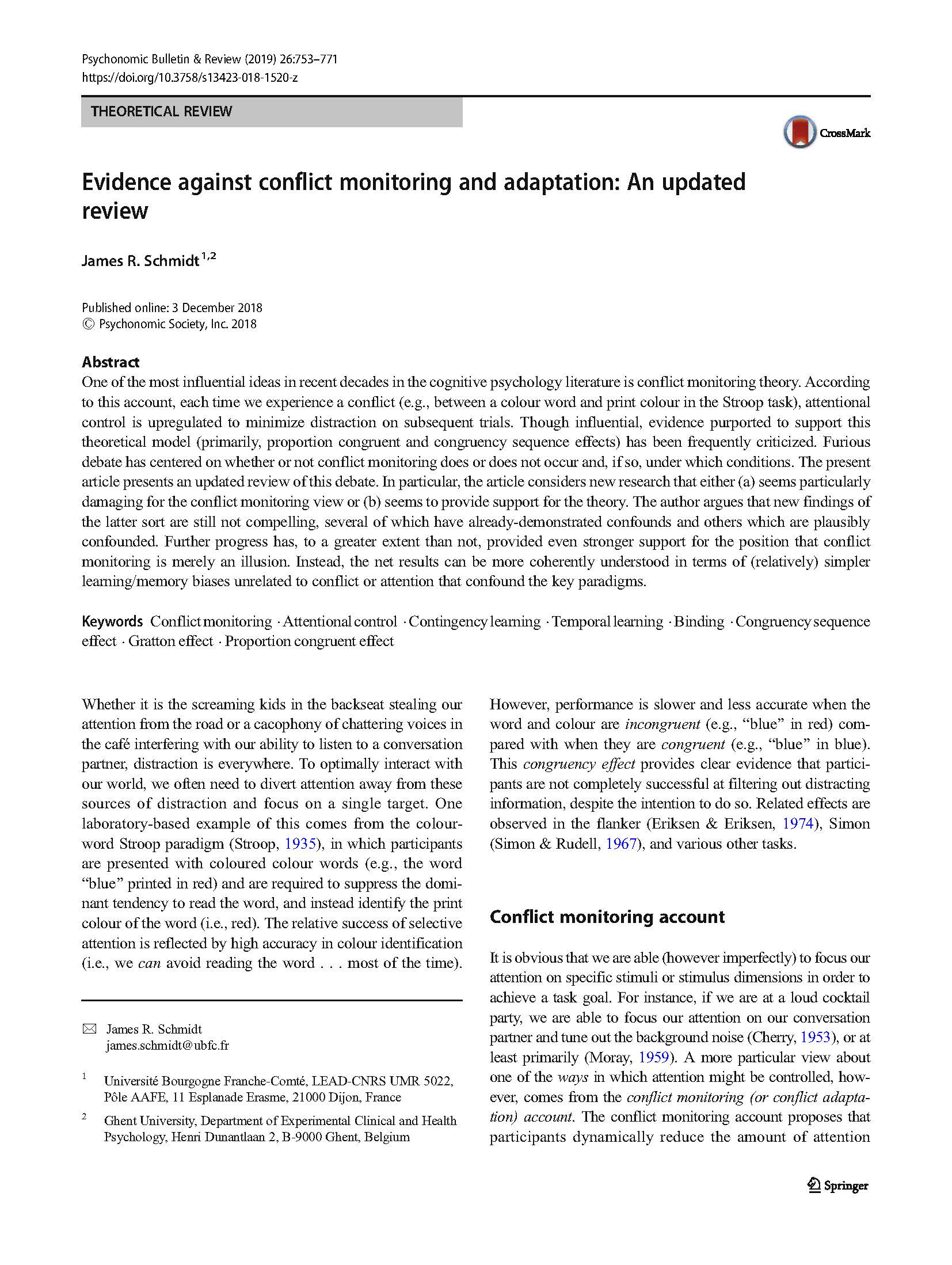One of the most influential ideas in recent decades in the cognitive psychology literature is conflict monitoring theory. According to this account, each time we experience a conflict (e.g., between a colour word and print colour in the Stroop task) attentional control is upregulated to minimize distraction on subsequent trials. Though influential, evidence purported to support this theoretical model (primarily, proportion congruent and congruency sequence effects) has been frequently criticized. Furious debate has centered on whether or not conflict monitoring does or does not occur and, if so, under which conditions. The present article presents an updated review of this debate. In particular, the article considers new research that either (a) seems particularly damaging for the conflict monitoring view, or (b) seems to provide support for the theory. The author argues that new findings of the latter sort are still not compelling, several of which have already-demonstrated confounds and others which are plausibly confounded. Further progress has, to a greater extent than not, provided even stronger support for the position that conflict monitoring is merely an illusion. Instead, the net results can be more coherently understood in terms of (relatively) simpler learning/memory biases unrelated to conflict or attention that confound the key paradigms.
Evidence against conflict monitoring and adaptation: An updated review
